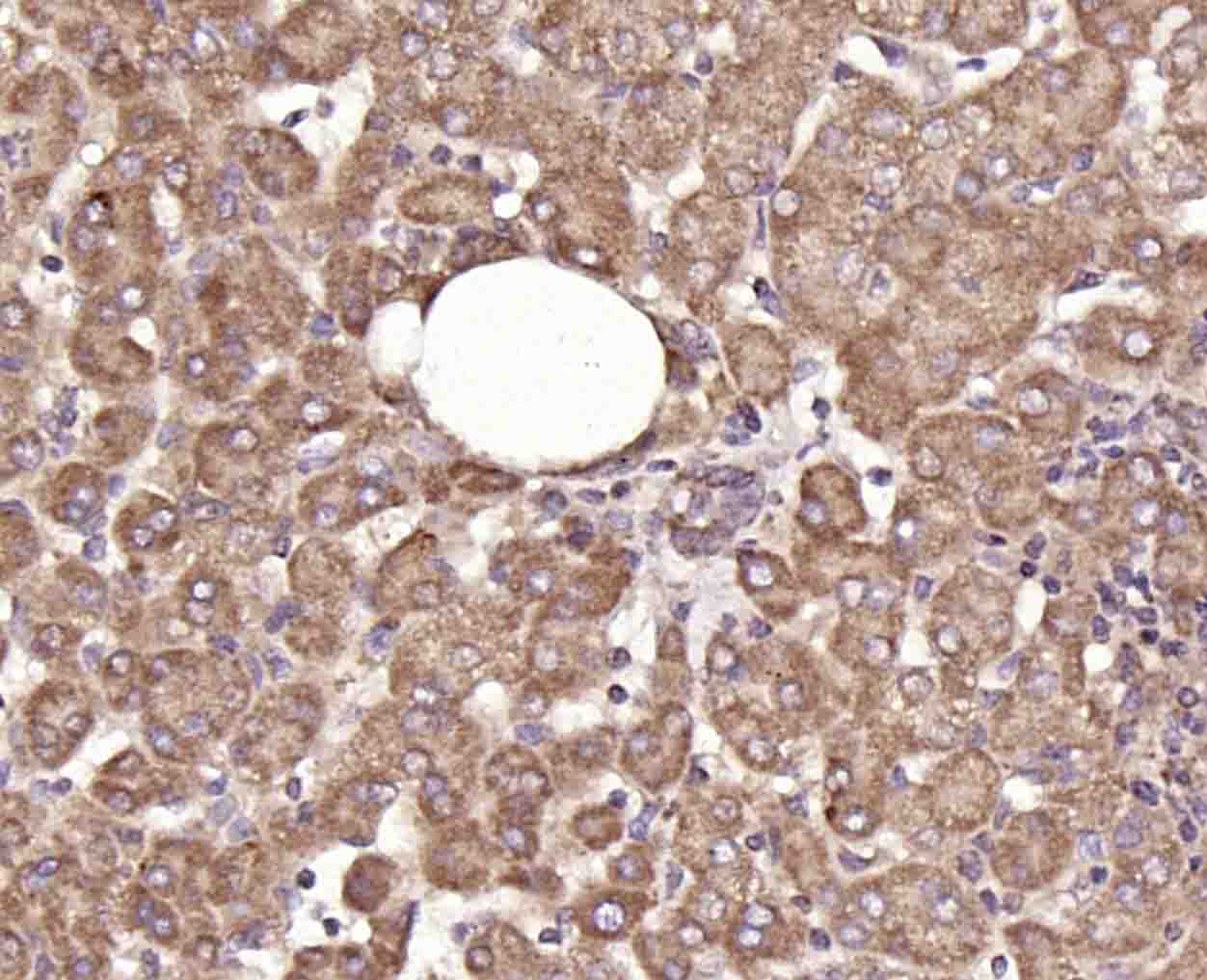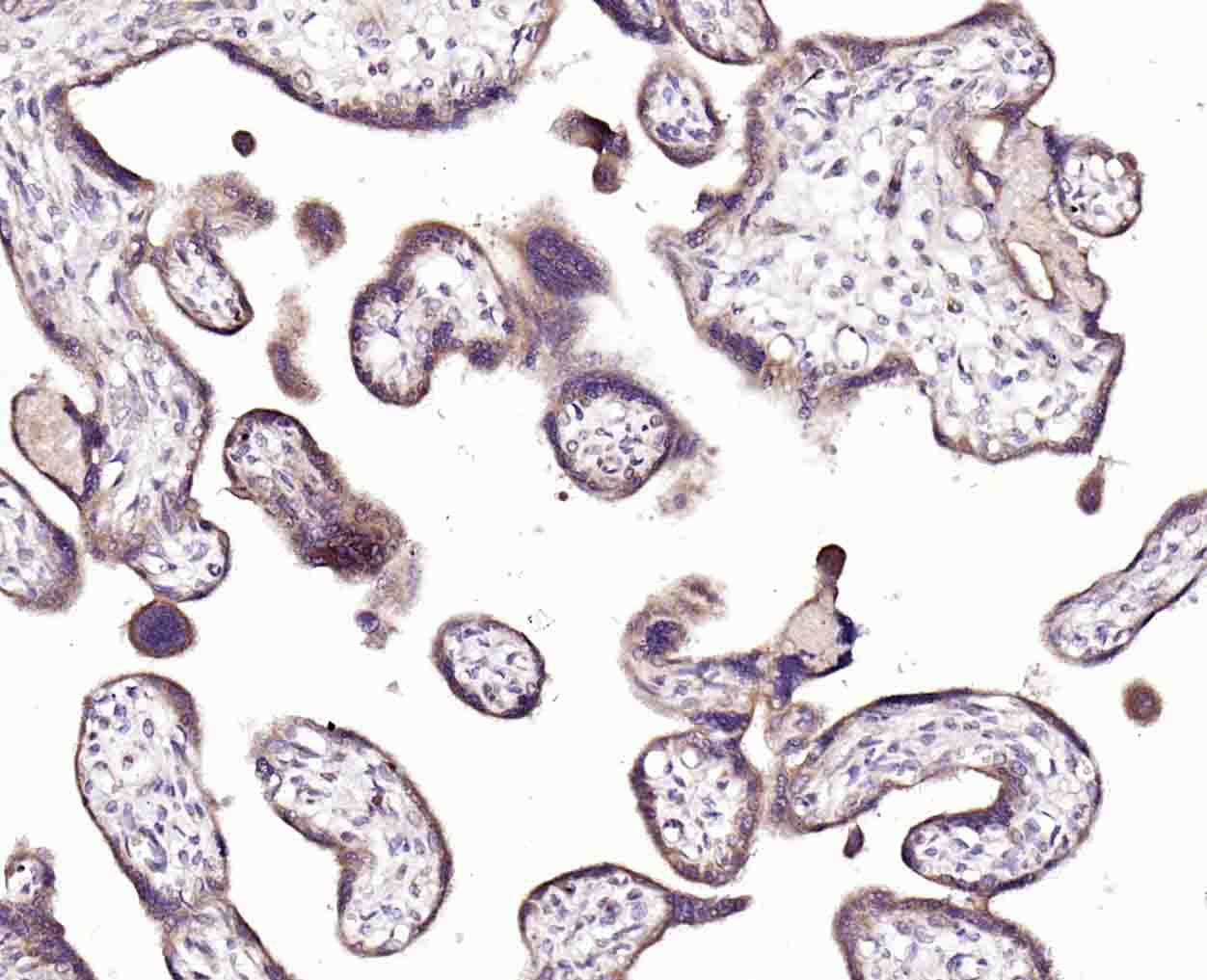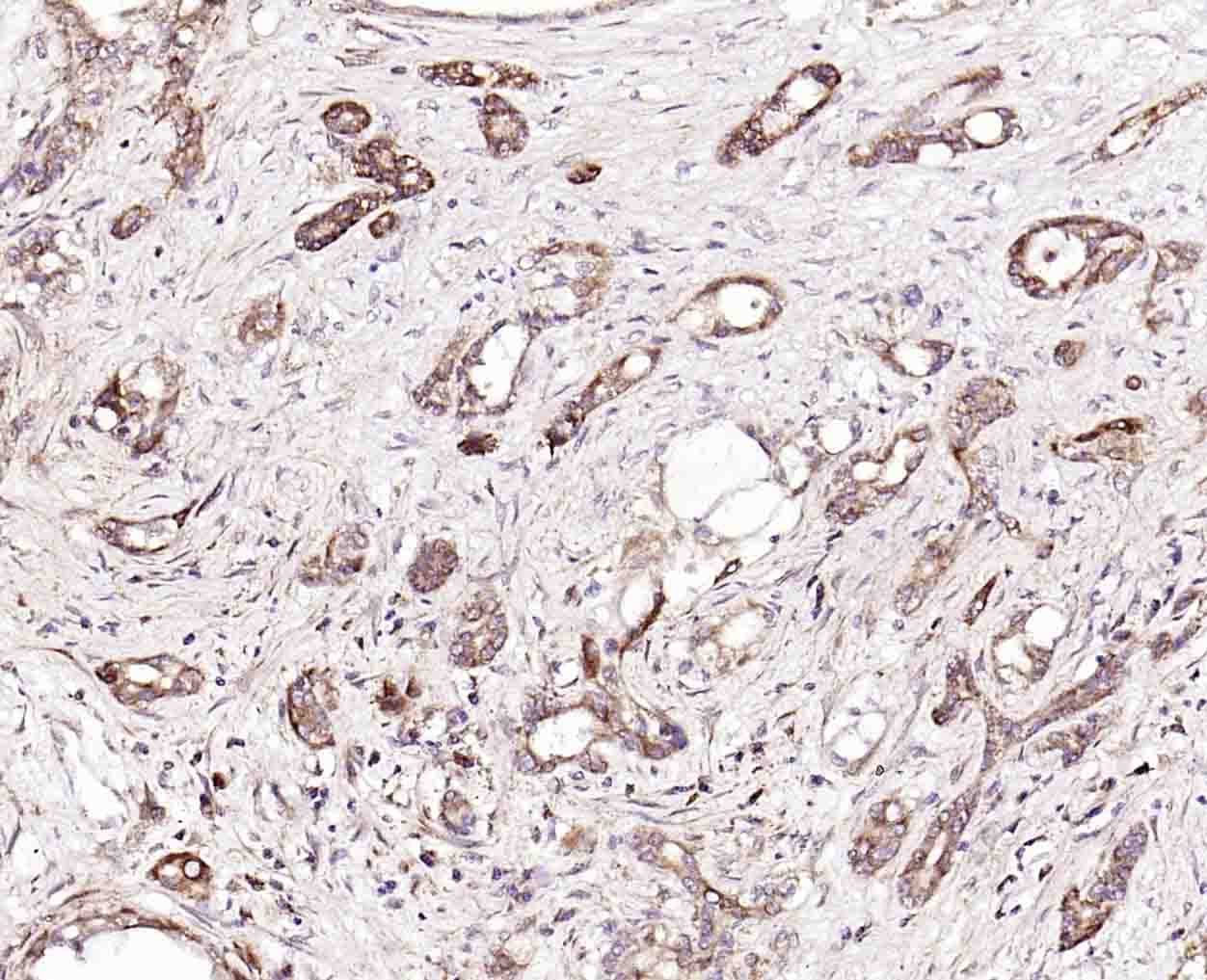Hrasls3 Rabbit pAb
Hrasls3 Rabbit pAb
- 产品详情
- 实验流程
- 背景知识
Application
| IHC-P, IHC-F, IF |
|---|---|
| Primary Accession | Q8R3U1 |
| Reactivity | Mouse |
| Host | Rabbit |
| Clonality | Polyclonal |
| Calculated MW | 17872 Da |
| Physical State | Liquid |
| Immunogen | KLH conjugated synthetic peptide derived from the middle of mouse Hrasls3 |
| Epitope Specificity | 8-100/162 |
| Isotype | IgG |
| Purity | affinity purified by Protein A |
| Buffer | 0.01M TBS (pH7.4) with 1% BSA, 0.02% Proclin300 and 50% Glycerol. |
| SUBCELLULAR LOCATION | Membrane; Single-pass membrane protein (Potential). Cytoplasm. Cytoplasm, perinuclear region. |
| SIMILARITY | Belongs to the H-rev107 family. |
| SUBUNIT | Interacts with PPP2R1A; this interaction might decrease PP2A activity. |
| Important Note | This product as supplied is intended for research use only, not for use in human, therapeutic or diagnostic applications. |
| Background Descriptions | HRASLS3 specifically catalyzes the release of fatty acids from phospholipids in adipose tissue and also has a weak lysophospholipase activity. It is a tumor suppressor that may be involved in interferon-dependent cell death. |
| Gene ID | 225845 |
|---|---|
| Other Names | Phospholipase A and acyltransferase 3, Plaat3 {ECO:0000250|UniProtKB:P53816} |
| Target/Specificity | Ubiquitously expressed in normal tissues but down-regulated in primary carcinomas or in many cell lines derived from tumors. Highly expressed in white adipose tissue and in adipocytes. Expressed at lower levels in brown adipose tissue. |
| Dilution | IHC-P=1:100-500,IHC-F=1:100-500,IF=1:100-500 |
| Format | 0.01M TBS(pH7.4) with 1% BSA, 0.09% (W/V) sodium azide and 50% Glyce |
| Storage | Store at -20 °C for one year. Avoid repeated freeze/thaw cycles. When reconstituted in sterile pH 7.4 0.01M PBS or diluent of antibody the antibody is stable for at least two weeks at 2-4 °C. |
| Name | Plaat3 {ECO:0000250|UniProtKB:P53816} |
|---|---|
| Function | Exhibits both phospholipase A1/2 and acyltransferase activities (PubMed:19047760, PubMed:37919452). Shows phospholipase A1 (PLA1) and A2 (PLA2), catalyzing the calcium-independent release of fatty acids from the sn-1 or sn-2 position of glycerophospholipids (PubMed:18614531, PubMed:19047760, PubMed:19136964, PubMed:22134920). For most substrates, PLA1 activity is much higher than PLA2 activity (By similarity). Shows O-acyltransferase activity, catalyzing the transfer of a fatty acyl group from glycerophospholipid to the hydroxyl group of lysophospholipid (By similarity). Shows N-acyltransferase activity,catalyzing the calcium-independent transfer of a fatty acyl group at the sn-1 position of phosphatidylcholine (PC) and other glycerophospholipids to the primary amine of phosphatidylethanolamine (PE), forming N-acylphosphatidylethanolamine (NAPE), which serves as precursor for N-acylethanolamines (NAEs) (PubMed:19047760). Exhibits high N-acyltransferase activity and low phospholipase A1/2 activity (By similarity). Required for complete organelle rupture and degradation that occur during eye lens terminal differentiation, when fiber cells that compose the lens degrade all membrane-bound organelles in order to provide lens with transparency to allow the passage of light (PubMed:33854238). Organelle membrane degradation is probably catalyzed by the phospholipase activity (PubMed:33854238). |
| Cellular Location | Cell membrane {ECO:0000250|UniProtKB:P53817}; Single-pass membrane protein. Cytoplasm. Cytoplasm, cytosol. Cytoplasm, perinuclear region. Peroxisome membrane; Single-pass membrane protein. Mitochondrion membrane; Single-pass membrane protein. Nucleus envelope. Lysosome membrane; Single-pass membrane protein. Endoplasmic reticulum membrane; Single-pass membrane protein. Note=During eye lens differentiation, recruited from the cytosol to various organelles, including mitochondria, endoplasmic reticulum, nuclear envelope and lysosomes, immediately before organelle degradation. This translocation is triggered by organelle membrane damage and requires the C-terminal transmembrane domain |
| Tissue Location | Ubiquitously expressed in normal tissues but down- regulated in primary carcinomas or in many cell lines derived from tumors (PubMed:12055182). Highly expressed in white adipose tissue and in adipocytes (PubMed:18614531, PubMed:19136964). Expressed at lower levels in brown adipose tissue (PubMed:18614531, PubMed:19136964) |
Research Areas
For Research Use Only. Not For Use In Diagnostic Procedures.
Application Protocols
Provided below are standard protocols that you may find useful for product applications.
BACKGROUND
This product as supplied is intended for research use only, not for use in human, therapeutic or diagnostic applications.
终于等到您。ABCEPTA(百远生物)抗体产品。
点击下方“我要评价 ”按钮提交您的反馈信息,您的反馈和评价是我们最宝贵的财富之一,
我们将在1-3个工作日内处理您的反馈信息。
如有疑问,联系:0512-88856768 tech-china@abcepta.com.























 癌症的基本特征包括细胞增殖、血管生成、迁移、凋亡逃避机制和细胞永生等。找到癌症发生过程中这些通路的关键标记物和对应的抗体用于检测至关重要。
癌症的基本特征包括细胞增殖、血管生成、迁移、凋亡逃避机制和细胞永生等。找到癌症发生过程中这些通路的关键标记物和对应的抗体用于检测至关重要。 为您推荐一个泛素化位点预测神器——泛素化分析工具,可以为您的蛋白的泛素化位点作出预测和评分。
为您推荐一个泛素化位点预测神器——泛素化分析工具,可以为您的蛋白的泛素化位点作出预测和评分。 细胞自噬受体图形绘图工具为你的蛋白的细胞受体结合位点作出预测和评分,识别结合到自噬通路中的蛋白是非常重要的,便于让我们理解自噬在正常生理、病理过程中的作用,如发育、细胞分化、神经退化性疾病、压力条件下、感染和癌症。
细胞自噬受体图形绘图工具为你的蛋白的细胞受体结合位点作出预测和评分,识别结合到自噬通路中的蛋白是非常重要的,便于让我们理解自噬在正常生理、病理过程中的作用,如发育、细胞分化、神经退化性疾病、压力条件下、感染和癌症。










